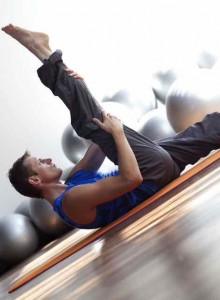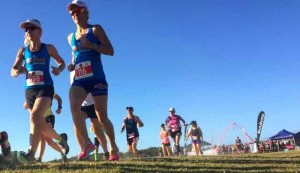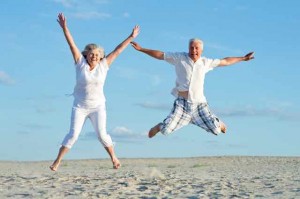Words By APA Titled Sports Physio Britt Caling
Over 40 years young? What Happens to your Muscles as you Age..
It is generally accepted that part of the ageing process involves a loss of muscle mass- just as your hair ages by thinning or changing colour, muscles lose mass. But just how much muscle do we really lose with age?
Most research suggests that from the age of 40, for each additional decade of life people will lose 8-10% of their muscle mass and that this muscle mass loss accelerates further at 70 years young.
Less muscle mass generally means less strength, less mobility in the elderly and a significant effect on well-being and independence. Often the loss of lean muscle mass (called sarcopaenia due to loss of muscle sarcomeres which are the protein building blocks of muscle) may not be apparent due to an associated increase in fat mass- that is, until the strength losses suddenly become apparent in some lifestyle activity that is no longer able to be achieved (ie. Pulling yourself over a high fence or standing up from a squat position on the floor).
Possible reasons for the decrease in muscle mass with increased age involve changes in both muscle fibre cross-section area and fibre number. Some studies report that Type I (slow twitch, aerobic) muscle fibers are less affected by age, at least until the ages of 60, while the relative area of Type II (fast-twitch, anaerobic) muscle fibers appear to decline with age from a much younger age bracket.
If increased age results in the decline of muscle mass and function, can the appropriate exercise training program provide some benefit for us as we age? 
Traditionally, Health Professionals have always advocated the benefits of strength or resistance training to minimize strength loss (ie resistance bands or weights). Recent studies all seem to agree that elderly skeletal muscle is able to adapt to short term (12 weeks) training programs by increasing strength through muscle hypertrophy (growth) of both types of fibers and improved functional performance.
A recently completed 26-week weight training study with early post-menopausal women showed that the women, generally in their early 50’s, had significant increases in strength for the upper and lower body muscle groups with a concomitant increase in muscle cross sectional areas.
However, researchers are now finding positive results on slowing the age-related muscle changes from other forms of exercise, including endurance aerobic exercise such as running. Canadian researchers from the Centre for Activity and Aging, examined the density of motor units within Runner’s leg muscles. A motor unit is, essentially, the control mechanism of a functioning muscle, composed of a neuron and the particular muscle fibers that that neuron activates. The more motor units in a muscle, the stronger it generally is. Aging results in fewer motor units and a poorer ability to activate the motor units present, however, this was not found to be true in older age-bracket runners whose leg muscles had almost as many motor units as a separate group of active 25-year-olds. Running, the scientists wrote, seemed able to “mitigate the loss of motor units with aging well into the seventh decade of life.”

In animal models, after just 13weeks of running training, older rats leg muscles have also been shown to fill with new satellite cells. These cells are a special type of stem cell that is needed to build and repair muscle- so this is great news if muscle loss changes may be changed with such a short amount of exercise/activity!
So to prevent age-related muscle mass, it appears that we just need to continue exercising as we age.
Sports Medicine Australia’s position statement on exercising and being active as we age recommends:
• Older people should accumulate at least 30 minutes of moderate intensity physical activity on most, preferably all, days.
• 30 minutes is needed to keep your heart, lungs, muscles and bones in good working order.
• If you can’t do 30 minutes now, start with 10 minutes once or twice a day.
• After two weeks, make it 15 minutes twice a day and you will have reached your goal of 30 minutes a day.
• If you can do more than 30 minutes each day there will be additional benefits.
• Try to be active every day in as many ways as possible, doing a range of activities that incorporate fitness, strength, flexibility and balance.
• The recommendations advise moderate intensity activity. This means you don’t have to puff and pant or work up a sweat – but if you do – it’s OK.
• Brisk walking is a great moderate intensity activity. If you don’t like walking, try working in the garden or going for a swim.
• If you have enjoyed a lifetime of vigorous physical activity, carry on doing so in a manner suited to your capability.

(http://sma.org.au/wp-content/uploads/2009/05/choose_health_be_active.pdf)
To help you achieve your goal of remaining strong, active and independent as you age, sit down and chat with our qualified Exercise Physiologists and they can help you with an Exercise and Activity Plan, or help you put together an appropriate gym or home weights program. Alternatively, try our Physio Pilates classes where your needs can be individualized to the exercise program you are given in clinic (and better still, both these services can be claimed through Private Health Insurance).
Phone 07 5500 6470 to book your appointment with our Exercise Physiologist, Physio or Dietitian/Nutrition Consultant today and we encourage you to stay active as you age!
